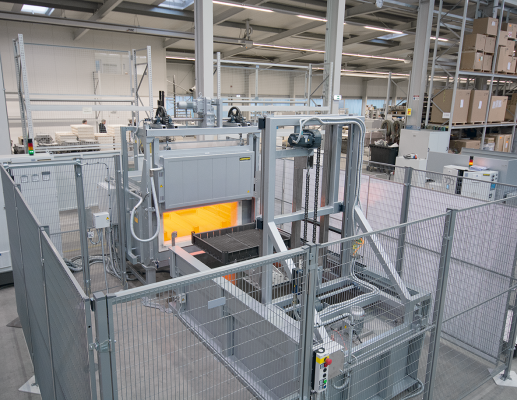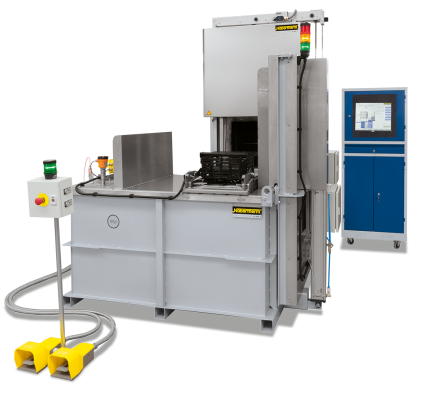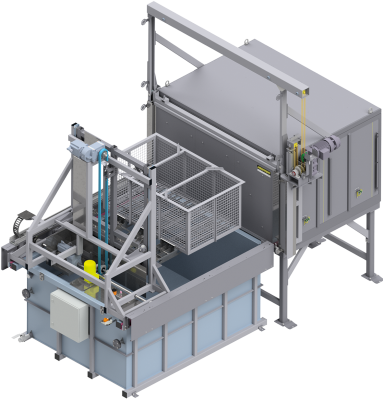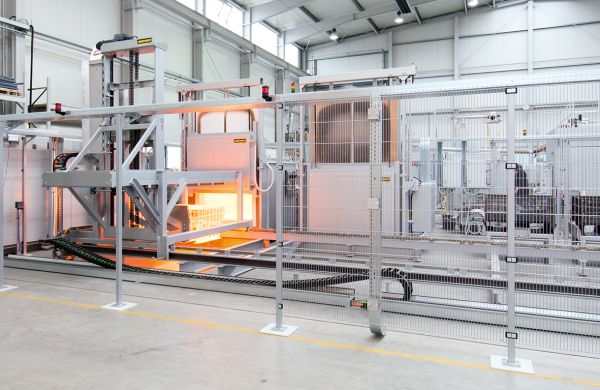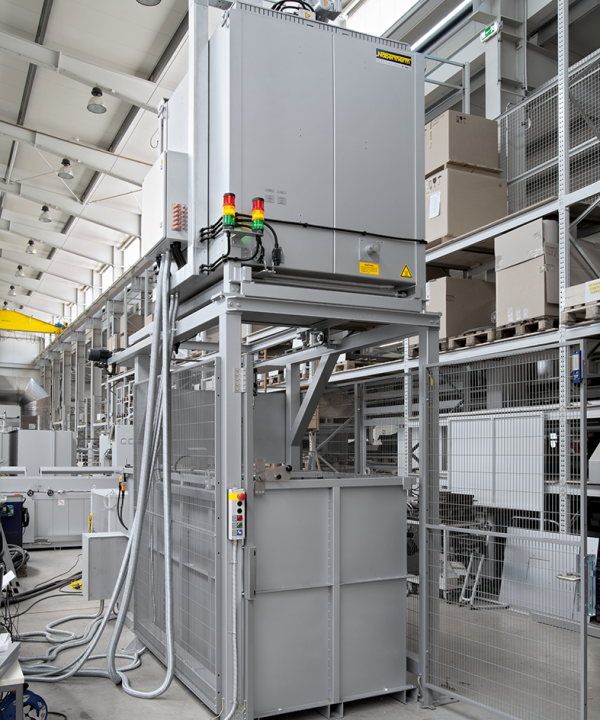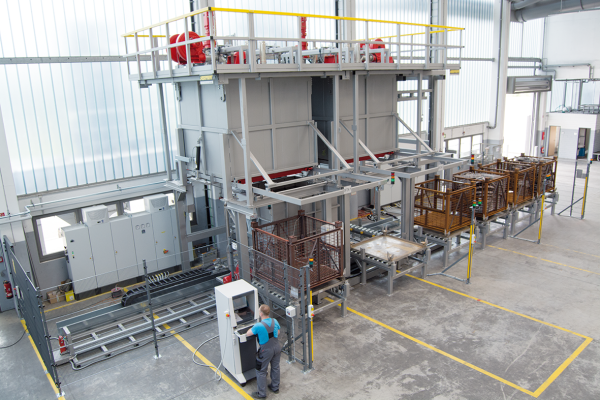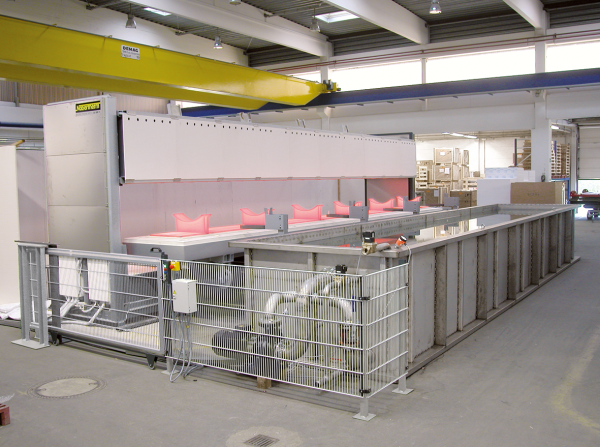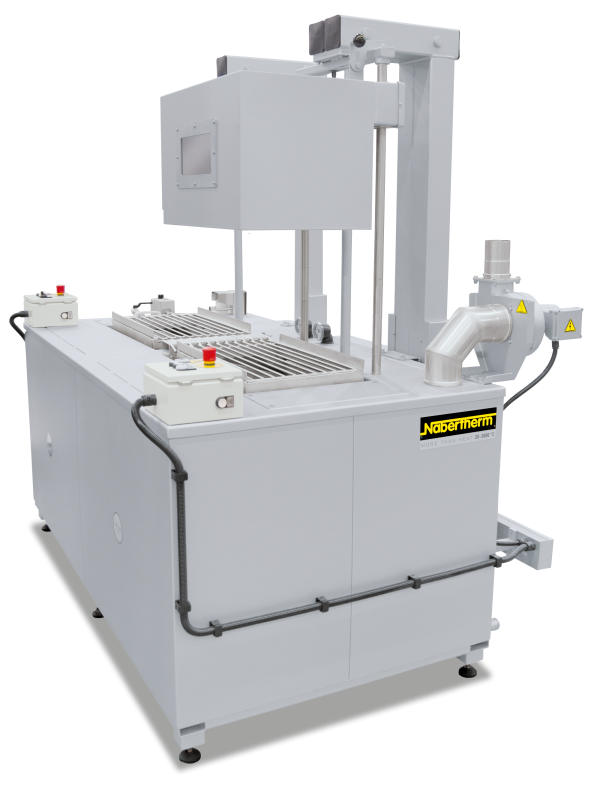Horizontal Tempering Plants
Horizontal tempering plants are ideal for tempering materials above 600 °C.
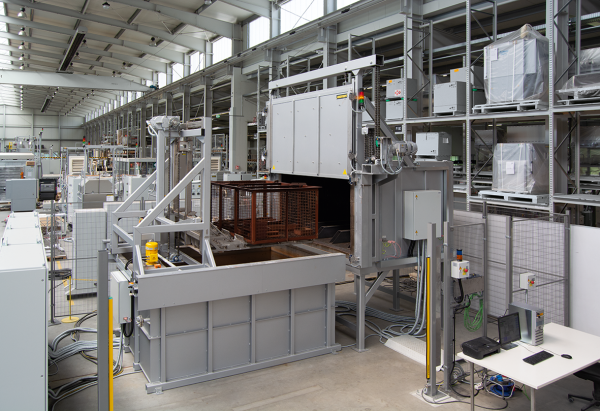
Function and equipment
Because the design of drop-bottom furnaces limits their maximum temperature to 600 °C, different plant concepts are needed to temper materials, such as steel, where much higher temperatures are required.
For these processes, horizontal chamber furnaces, which are loaded from the front by a two-axis manipulator, are suitable. This type of plant is characterized by a low construction height and a low level of wear and tear, as the movement technology is in the hot zone only for a short time. Depending on the charge weight and dimensions, these systems allows quench delay times of seven seconds. Consequently, in many cases, horizontal tempering plants with a forced convection furnace are also very good for heat treatment of aluminum.
Nabertherm offers a wide range of standard sizes on which manual, semi or fully automatic horizontal tempering plants can be developed.
- Working temperature range between 80 °C and 1300 °C
- Quench tank with circulation, fresh water cooling, level control and temperature monitoring
- Two-axis manipulator with fork for semi-automatic charging, removing and quenching the charge
- Over-temperature limiter with adjustable cutout temperature as temperature limiter to protect the furnace and load
- Exclusive use of insulation materials without categorization according to EC Regulation No 1272/2008 (CLP). This explicitly means that alumino silicate wool, also known as “refractory ceramic fiber” (RCF), which is classified and possibly carcinogenic, is not used.
- Defined application within the constraints of the operating instructions
- Siemens S7 PLC controls with touchpanel as operating interface
- Electrically heated
Additional equipment
- Controlled cooling of the furnace with fresh-air fan
- Direct or indirect gas firing
- Charging basket made from normal or stainless steel
- Three-axis manipulator for charging in additional furnaces or tanks (for example, cleaning tanks) or for transferring to possible holding positions
- PC-based software, Nabertherm Control Center, for visualization, control and process documentation
- Compliance with relevant aviation and automotive standards, such as AMS2750H, AMS2770/2771 or CQI-9 as an option
- Process control and documentation via VCD software package for monitoring, documentation and control
- Customized extensions
As these plants can be easily extended, full automation is possible. By extending the conveying technology with a third axis for sideways movement, several furnaces, tanks and holding positions can be combined automatically. Plants can be adapted to suit specific processes. Upstream conveying systems can also be integrated. The plants can be loaded and unloaded easily using the integrated holding positions.
Technical specifications
Furnace families | Model | Tmax | Work space dimensions in mm | Volume | Typical application | Quenching bath | ||
|---|---|---|---|---|---|---|---|---|
°C | w | d | h | in l | ||||
Forced convection chamber furnaces | NA 120/.. | 450, 600 or 850 | 450 to 2000 | 600 to 2500 | 450 to 2000 | 120 to 4000 | Light metals | Individually adapted to suit the respective process and size of charge |
Radiation heated chamber furnaces | N 161/.. | 1300 | 750 to 2500 | 1300 to 1200 | 750 to 700 | 161 to 2401 | Steel and titanium | |
Request for quotation
Further products
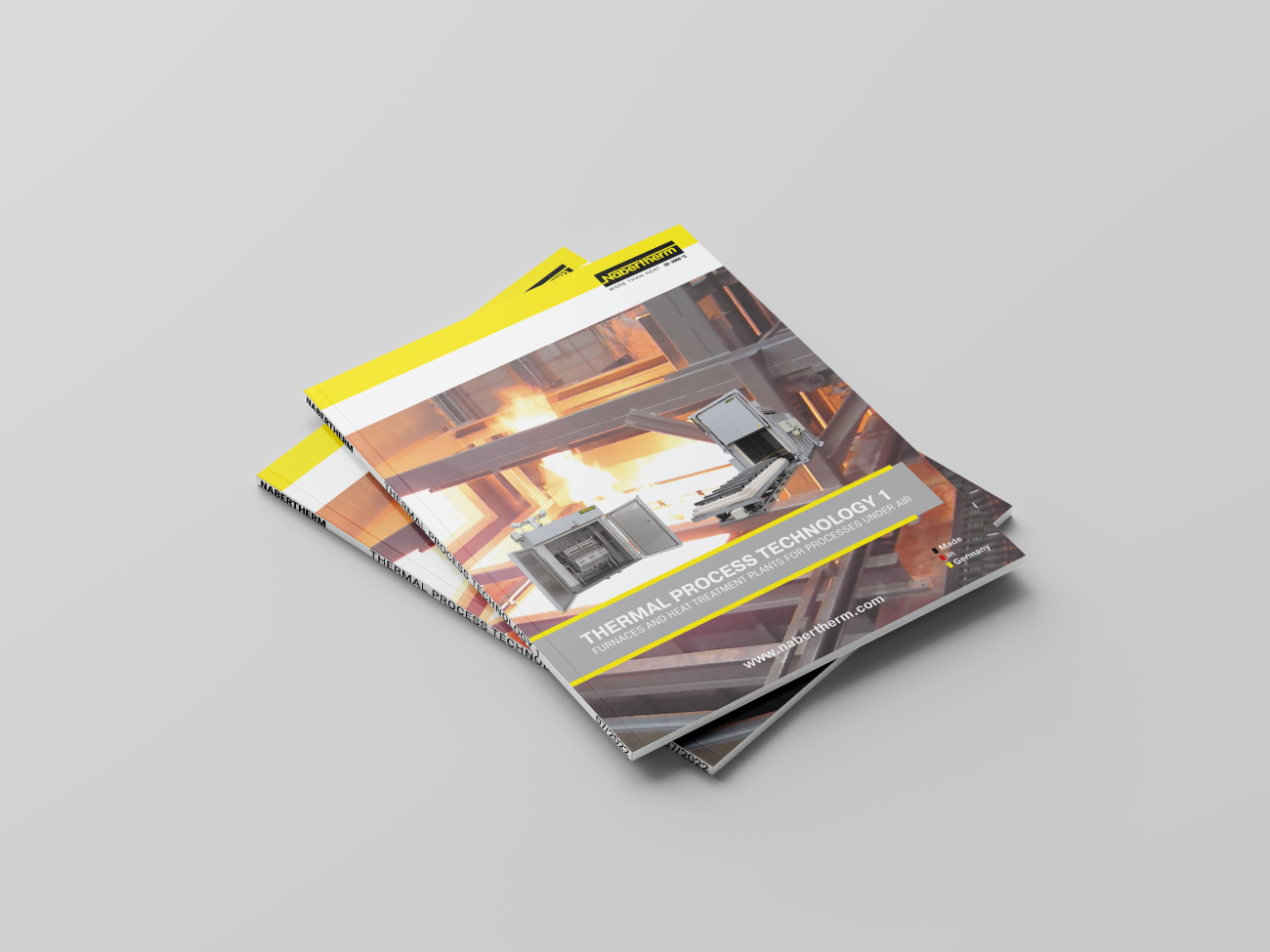
Catalog
A complete overview of our extensive range of furnaces and plants that are used for heat treatment processes in air can be found in our catalog "Thermal Process Technology 1, furnaces and heat treatment plants for processes under air".


